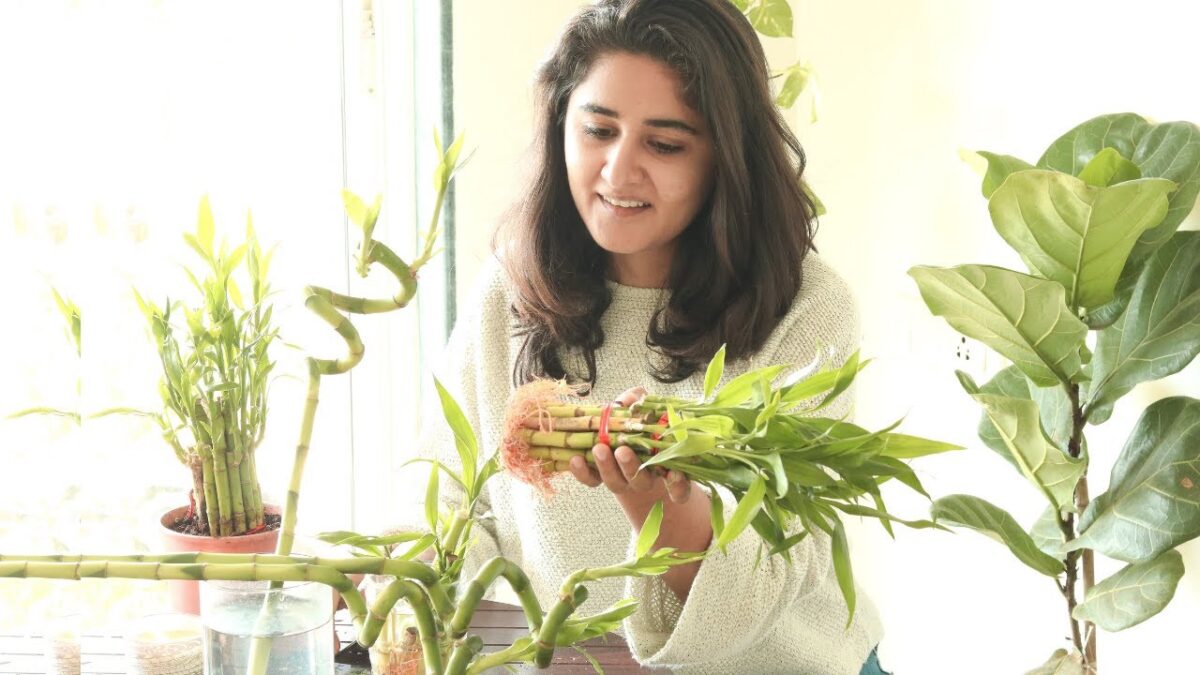The Money Tree Plant: A Guide to Growing Luck and Prosperity

The Money Tree Plant, also known as Pachira Aquatica, is famous worldwide as a symbol of prosperity and good fortune. Originally from Central and South America, it has gained widespread appeal for its aesthetic beauty and ability to attract wealth and success. This article provides a detailed guide on everything you need to know, from its history and cultural significance to its care requirements and benefits.
What is a Money Tree Plant?
The Money Tree Plant (Pachira aquatica) is a tropical wetland tree in the mallow family. Its natural habitat includes swamps and areas with high humidity in Central and South America. The Money Tree Plant is famous for its braided trunk, glossy leaves, and adaptability to indoor environments, making it a favorite among houseplant enthusiasts and Feng Shui practitioners.
- Scientific name: Pachira aquatica
- Native habitat: Swamps in Central and South America
- Symbolism: Good luck, prosperity, and wealth
- The History and Symbolism of the Money Tree Plant
The symbolism traces back to Asian cultures, where it is believed to bring financial success and ward off negative energy. In Feng Shui, it is often placed in business establishments and homes to attract positive energy related to wealth.
- Cultural roots: Associated with luck in Feng Shui
- Symbolic meaning: Prosperity, good fortune, and positive energy
- Global appeal: Popular among both plant enthusiasts and those seeking good fortune
Characteristics of the Money Tree Plant
The Money Tree Plant is visually distinctive due to its braided trunk, shiny green leaves, and occasional yellow-green flowers. When mature, it can reach heights of up to 60 feet in the wild but typically grows between 3 to 6 feet indoors.
- Leaf shape: Glossy, palmate leaves
- Trunk structure: Often braided for aesthetic appeal
- Size: 3-6 feet indoors; up to 60 feet outdoors
The Importance of the Money Tree Plant in Feng Shui
In Feng Shui, the Money Tree Plant is placed in specific areas of the home to maximize its effects. For wealth and prosperity, it’s commonly positioned in the southeast part of a room or home. Its five leaves represent the five Feng Shui elements: earth, water, fire, wind, and metal.
- Five leaves: Representing five Feng Shui elements
- Best placement: Southeast part of home or workspace
- Feng Shui benefits: Attracts prosperity, positive energy, and harmony.
How to Grow and Care for a Money Tree Plant
Growing and maintaining a Money Tree Plant requires attention to specific conditions, such as light, water, soil, and temperature. Here’s how you can ensure that your plant thrives.
Light Requirements
The Money Tree Plant thrives in indirect sunlight. Direct sunlight can cause leaf burns, while insufficient light can stunt its growth.
- Ideal light: Bright, indirect sunlight
- Avoid Direct sunlight exposure.
- Solution for low light: Consider grow lights if natural light is limited
Watering Needs
- While the Money Tree Plant enjoys moist soil, it avoids overwatering, which can lead to root rot. , is essential every 1-2 weeks, allowing the top inch of soil to dry out between wawateringsWatering frequency: Every 1-2 weeks
- Check soil: Allow the top inch to dry out.
- Avoid: Overwatering to prevent root rot.
Soil Requirements
The Money Tree Plant prefers well-draining, nutrient-rich soil. A balanced potting mix with added perlite or sand ensures proper drainage.
- Preferred soil type: Well-draining, nutrient-rich soil
- Enhancements: Add perlite or sand for better drainage
- Container choice: Use pots with drainage holes
Temperature and Humidity
The Money Tree thrives in warm and humid conditions as a tropical plant. The ideal temperature range is between 65-80°F (18 and 27°C).
- Ideal temperature: 65-80°F (18-27°C)
- Humidity: Medium to high
- Avoid Cold drafts and sudden temperature changes.
Common Pests and Diseases Affecting the Money Tree Plant
While relatively hardy, the Money Tree Plant can still be susceptible to pests and diseases, particularly indoors.
Common Pests
The Money Tree Plant may attract pests like spider mites, mealybugs, and aphids. Regularly check the leaves for signs of infestation and treat with insecticidal soap if necessary.
- Spider mites: Tiny, web-spinning pests
- Mealybugs: White, cotton-like clusters on leaves
- Treatment: Use insecticidal soap or neem oil
Disease Prevention
Root rot is the most common disease affecting the Money Tree Plant, usually due to overwatering. Ensuring proper drainage and watering practices is critical to preventing this issue.
- Root rot: Caused by overwatering
- Leaf spot: Caused by fungal infections
- Prevention: Proper watering, good airflow
Benefits of Having a Money Tree Plant at Home
Beyond its symbolism, the Money Tree Plant offers a variety of benefits that make it a valuable addition to any home.
Improves Air Quality
Like many indoor plants, it helps filter toxins from the air, contributing to a cleaner and healthier indoor environment.
- Air-purifying qualities: Removes toxins
- Improves indoor environment: Reduces air pollutants
Reduces Stress
Studies suggest that houseplants can reduce stress and improve mood. The Money Tree Plant’s aesthetic appeal and calming presence create a positive indoor atmosphere.
- Aesthetic appeal: Brightens up indoor spaces
- Psychological benefits: Reduces stress, enhances mood
Enhances Focus and Productivity
Plants in your workspace can improve concentration and productivity, making it a favorite for home offices.
- Increases focus: Enhances productivity.
- Ideal for offices: Great addition to workspaces
Propagating a Money Tree Plant
Propagating a Money Tree Plant through stem cuttings is possible. This process can reward plant enthusiasts looking to expand their collection or share the plant with others.
Steps for Propagation
- Cut a healthy stem with at least two leaves.
- Dip the cut end in the rooting hormone (optional).
- Place the cutting in moist soil or water.
- Wait for roots to develop (usually 2-4 weeks).
- Tools needed: Clean scissors, rooting hormone (optional)
- Timing: Spring or summer is ideal for propagation
- Where to Buy a Money Tree Plant
The Money Tree Plant is widely available in plant nurseries, home improvement stores, and online. Purchasing from a reputable source ensures you get a healthy plant.
- Online options: Many online plant stores offer Money Trees with delivery options
- Local nurseries Often have healthy plants with expert advice on care
- Pricing: Prices vary depending on size and source
Conclusion: Why the Money Tree Plant is Worth Having
The Money Tree Plant isn’t just a beautiful addition to your home; it also embodies the ancient beliefs of luck and prosperity. Its easy-to-follow care routine and numerous benefits make it an ideal plant for beginners and seasoned plant lovers. Whether you’re its symbolism or simply enjoy its aesthetic value, it is an excellent companion that can bring positivity and freshness into your life. Embrace this plant and its cultural significance to invite a touch of luck and charm into your space.



